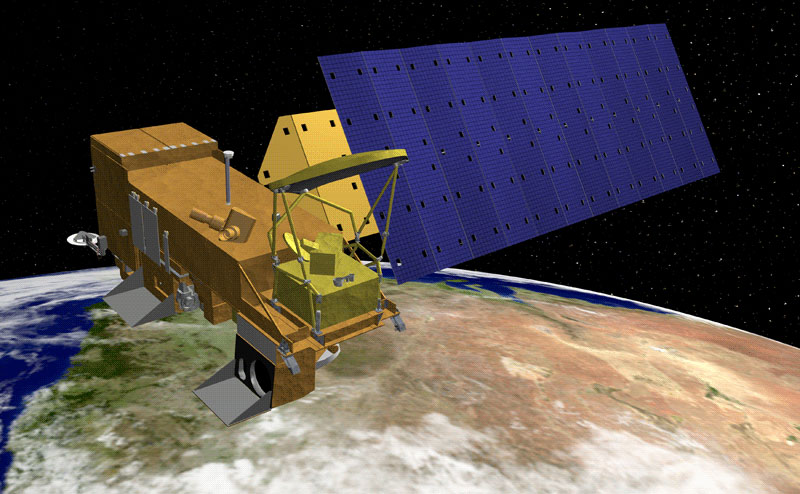When it comes to global climate, one of the strongest triggers of short-term variability is the El Niño Southern Oscillation (ENSO). Normally, most of the Earth’s warm water is concentrated in a deep pool in the western Pacific. But every three to five years, El Niño makes its appearance, bringing warm water to the surface and making the tropical Pacific Ocean warmer than average. (Conversely, during La Niña, sea-surface temperatures become colder than normal.)

As a potent greenhouse gas, water vapor plays a key role in global climate: As temperatures rise, water vapor increases, and because water vapor is itself a greenhouse gas, this produces even more warming. This vicious cycle is known as a feedback. By looking at the AIRS water vapor data during both the cold and warm cycles of the ENSO (El Niño and La Niña), Dessler can see how water vapor levels are responding to temperature changes and calculate the strength of the water vapor feedback.
Water Vapor
“If the globe warmed seven-tenths of a degree during the last El Niño, I can see in the AIRS data how water vapor changed in response to that. This tells me a lot about how water vapor is going to interact with climate change,” he said.
Now that AIRS has 12 years of data, Dessler is able to measure water vapor at all altitudes of the lower atmosphere during several El Niño cycles. “Water vapor doubles the amount of warming you get from CO2 alone, so it’s really this very significant effect,” he said. “If you have only three years of data, you really don’t know if what you’re seeing in the atmosphere is representative of the longer-term picture.”
Clouds: Using the present to predict the future
While water vapor has a powerful effect on the climate system, the role that clouds play in affecting climate change is not well understood. “Models all predict that the water vapor effect doubles the amount of warming, but we’re still pretty uncertain about how clouds amplify warming,” said Hui Su, a research scientist at NASA’s Jet Propulsion Laboratory.
Low clouds can shelter the Earth like an umbrella, reflecting solar radiation back to space and producing a net cooling effect. But high clouds can act like a blanket over the planet, triggering a greenhouse (warming) effect. The big conundrum for climate modelers is, how much cloud cover will there be in the future? The answer to that question is directly related to humidity.
“More moisture in the atmosphere means more cloud cover,” said Su. “Based on the AIRS data, we know what the current humidity should be, and that should predict the amount of clouds,” said Su. “So, we’re really using current observations to infer the realism of model predictions.”
How can we help
ReplyDelete